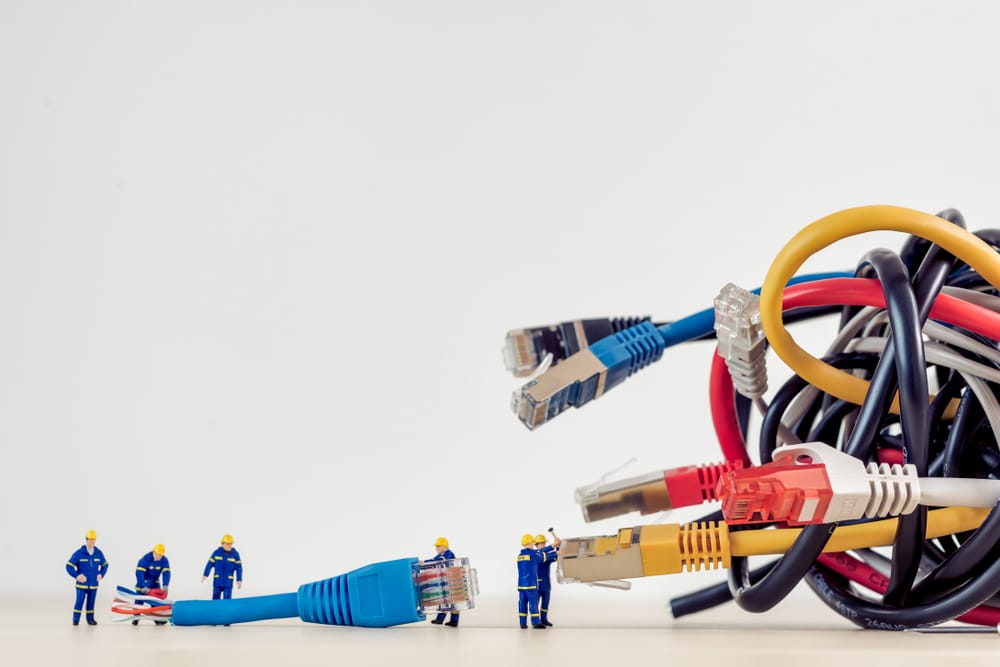5 Signs Your Dental Practice Needs a Cabling Upgrade
In the realm of dental practices, the backbone of operational efficiency is increasingly found in its technological systems. A reliable network infrastructure underpins the seamless functioning of a dental clinic. However, outdated dental computer cabling or dental IT cabling can sow the seeds of myriad issues, from slow performance to significant security vulnerabilities.
Sign 1: Slow Network Performance
The pace of your clinic’s operations is often dictated by its network speed. A sluggish internet can mean delays in accessing patient records, processing claims, or utilizing digital tools. Central to this performance is the quality of your dental IT cabling. A study conducted in 2020 found that dental practices with outdated cabling experienced a 30% drop in operational efficiency due to slow network speeds.
Sign 2: Frequent Network Downtime
Reliability is paramount in healthcare. Patients trust dental professionals with their care, and this extends to timely and uninterrupted services. Outdated cabling is a ticking time bomb, increasingly susceptible to wear and tear, potentially leading to regular outages. Even a brief network downtime can result in appointment cancellations, impeding the continuity of care for your patients.
Sign 3: Inadequate Support for Modern Technology
Modern dental practices lean heavily on technology, from digital radiography to electronic health records (EHR). These advancements often come with enhanced data and speed requirements. Outdated dental computer cabling may fall short, unable to support these high-tech tools. Staying current isn’t just about offering the best services; it’s a necessity for operational viability.
Sign 4: Security Concerns
Digital data in dental practices isn’t just about appointment times or procedures. It often includes sensitive patient information – medical histories, financial details, and personal identifiers. A breach can be disastrous. Old cabling systems, not designed with modern security threats in mind, can become a weak link in your defense. With rising regulatory scrutiny around data protection, ensuring your dental IT cabling is secure is imperative.
Sign 5: Experiencing High Maintenance and Repair Costs
While the upfront cost of a cabling upgrade might seem steep, it’s essential to look at the broader financial picture. Outdated systems can become money pits, necessitating frequent repairs. Moreover, the indirect costs from downtime can add up quickly. Apart from being more reliable, modern cabling can lead to substantial long-term savings. This increased efficiency invariably translates to higher patient satisfaction as services become swifter and more dependable.
Future-Proofing Your Practice
The dental landscape is evolving, and so are its technological needs. It’s not just about addressing current issues but also anticipating future requirements. Investing in modern, scalable cabling solutions ensures that as your practice grows or adopts newer technologies, your infrastructure doesn’t lag behind.
Consulting with Experts
Navigating the intricacies of dental computer cabling can be challenging. It’s prudent to consult with dental IT specialists or dental IT cabling professionals. A comprehensive network assessment can spotlight vulnerabilities in your current setup. When searching for experts, ensure they have specific experience with dental practices and are recommended by trusted peers.
In summary, the five tell-tale signs your dental practice may require a cabling upgrade are slow network performance, recurrent network downtimes, inability to support modern technology, burgeoning security concerns, and escalating maintenance costs. As dental professionals, the onus is on ensuring not just the best in patient care but also the most efficient and secure operational environment.




